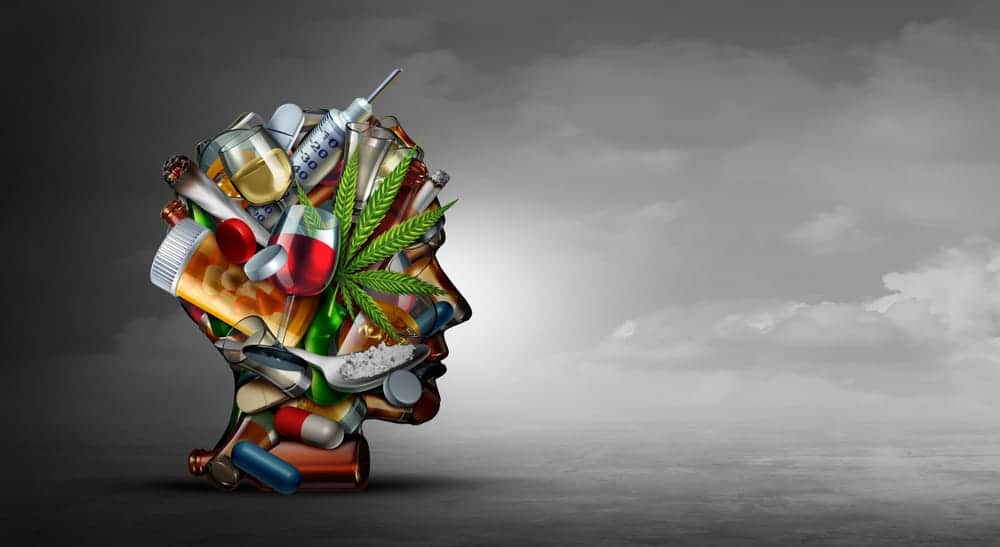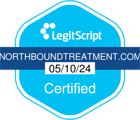Abuse of opioids and opiates is a widespread problem throughout the United States. Devastatingly, an average of 128 people die every day from an overdose. And the epidemic hurts more than those who abuse opioids and opiates — it’s a public health crisis that impacts families, communities, and the economy. When considering the cost of healthcare, addiction treatment, criminal justice involvement, and lost productivity, the economic burden of opioid abuse is nearly $80 billion a year1.
If you or a loved one are battling drug abuse or addiction, the team at Northbound Treatment is glad you’re here. We can help you learn the symptoms of opiate withdrawal, the opioid withdrawal timeline, and share some opioid addiction facts. Understanding a substance and the various effects it can have on a person is an essential preliminary step to getting proper help. Below, find answers to your opioid versus opiate questions, as well as useful information and guidance for seeking treatment at a rehabilitation center.
What’s the Difference Between Opiates and Opioids?
Is there a difference between opiates and opioids, and if so, what is it? While the terms “opioid” and “opiate” are often used interchangeably, they’re not quite the same thing. Both are narcotic analgesics (potent and extremely addictive painkillers). The primary difference between the two has to do with ingredients.
The active ingredient in opiates (including codeine, morphine, and heroin) is opium, which is naturally derived from poppies. According to the CDC (Centers for Disease Control and Prevention), opioids can include either (or both) naturally derived or synthetic ingredients. In other words, opiates fall under the umbrella of opioids, but not all opioids are opiates. For instance, common opioids include synthetic drugs like Vicodin (hydrocodone), methadone, Percocet (oxycodone), and fentanyl, but since they don’t contain natural opium, they aren’t opiates2.
Prescription Opioids and Opiates
Prescription opiate and opioid medication is used to treat severe pain caused by injuries, surgical procedures, and serious illnesses, like cancer. In the last decade, prescription painkiller has been widely prescribed to alleviate moderate pain and discomfort for individuals with conditions like osteoarthritis and chronic back pain.
In 2017, upwards of 191 million opioid prescriptions were dispensed to patients in the U.S. Though prescription painkillers can offer serious pain relief to some patients, anyone who takes them is at risk of developing physical dependence. Almost 12 million Americans report misusing narcotic medications within the past year. And unfortunately, opioid and opiate prescriptions are involved in many overdose deaths, the most common being oxycodone (OxyContin), hydrocodone, and methadone3.
As many as 30% of opioid overdose deaths also involve benzodiazepines or “benzos.” These sedative medications depress the central nervous system, and they’re prescribed to patients who suffer from seizures, insomnia, and anxiety. Both the number of benzodiazepine prescriptions dispensed to patients (including Xanax, Valium, and lorazepam) and the quantity prescribed have spiked in recent years. This is a serious concern, as benzos and opioids can be a dangerous and even lethal combination4.
Heroin and Fentanyl
Heroin (an opiate) is an illegal street drug, and fentanyl (an opioid) is a prescription painkiller. The substances are some of the most potent and addictive drugs today. Pharmaceutical fentanyl is 50 to 100 times as potent as morphine. However, it has been produced illegally in recent years and is widely abused by those without prescriptions5.
A sharp increase of heroin-involved overdose deaths began in 2010, with nearly five times the fatalities by 2017. While heroin overdose deaths have decreased by about 4% since 2017, synthetic opioid fatalities have gone up by 10%. In recent years, the slight drop in heroin overdoses has been met by a rise of deaths involving illegally manufactured fentanyl. In many instances, these fatalities involve other substances, such as cocaine or alcohol5.
Opioid Addiction Is an Epidemic
Opioid addiction is an epidemic. Between 1999 and 2018, roughly 450,000 people died from overdoses involving opioids, including opiates and synthetic painkillers5. And sadly, the nation’s opioid epidemic is continuing alongside the coronavirus pandemic.
According to a recent report by the AMA (American Medical Association) Advocacy Resource Center, there’s been a surge in opioid-related deaths, most of which involve fentanyl. More than 40 states, including California, have reported increases in overdose fatalities. Not only that, but there are rising concerns over resources for those battling mental illness and substance use disorder (SUD)6. If you or someone dear to you need help overcoming addiction, call Northbound Treatment today at (888) 978-8649.
Opioid Use Disorder
Though prescription narcotics can be safe when taken as directed for a short period, they are immensely addictive with high instances of misuse and abuse. This often leads to opioid use disorder (or OUD), a form of SUD.
Opioid use disorder (also known as opioid addiction or opioid dependence) is a highly concerning condition that can result in short- and long-term distress and impairment, and in some cases, death. OUD can affect people in a variety of ways, but the signs of addiction are often similar.
Someone with opioid use disorder might:
- Be unable to stop or control their use of painkillers
- Take more than the recommended dose
- Develop a tolerance and require higher doses to achieve the desired effect
- Fake symptoms in an attempt to receive a prescription
- Obtain prescriptions from more than one doctor
- Use opioids without a prescription
- Begin using heroin or illegally manufactured fentanyl
- Appear lethargic or abnormally drowsy
- Sleep more than usual or fall asleep at odd hours
- Appear confused, have slow reaction times, or talk slower than usual
- Have abnormally small “pinpoint” pupils
- Have bloodshot, droopy, or watery eyes
- Experience nausea or constipation
- Seem agitated, paranoid, or have atypical mood swings
- Hide pill bottles or other drug paraphernalia throughout their home
- Become disinterested in things they once enjoyed
- Withdraw from loved ones or become socially isolated
- Perform poorly at school or work
- Struggle financially or ask to borrow money from friends and family
If opioid dependence is present, an individual will likely also experience opioid withdrawal symptoms when they go more than a few hours without a dose. Additionally, you may notice physical signs of deteriorating health, like dark circles around their eyes, sallow skin, drastic weight loss, or poor hygiene.
Due to the habit-forming and potentially lethal nature of opiates and opioids, OUD is extremely serious and should be addressed as soon as possible. At Northbound Treatment, we’re equipped to treat addiction to a wide range of illegal and prescription drugs at our rehab centers in Orange County. Here’s what you should know about seeking help.
Opioid vs. Opiate Treatment
Are you wondering about treatment for opioid versus opiate abuse? Both typically require intensive rehabilitation programs involving the full continuum of care we offer at Northbound. Most OUD programs begin with medically supervised detox at our safe and comfortable 180 Detox center. Once they’ve stabilized, clients transfer to a residential rehab program where they’ll stay for 30 to 90 days (or longer if needed). After that, they can transition to outpatient treatment, and finally, they can enroll in ongoing addiction support to prevent the risk of relapse.
That being said, no two paths to recovery are the same. As we mentioned, opioids can affect people very differently, and beyond that, treatment depends on the nature and duration of an individual’s drug abuse.
Additionally, many clients who enroll in our treatment programs battle a co-occurring mental health disorder, like depression, anxiety, post-traumatic stress disorder, or codependency. If a client has co-occurring disorders, care for both substance abuse and mental health will be implemented into a unique dual diagnosis treatment plan.
Rehab for Opioids and Opiates in Orange County
Here at Northbound, we provide fully integrated rehab programs for those struggling with opiate and opioid addiction and any potential co-occurring disorders. Each client is assigned a dedicated care team who works with them individually and in group settings to address opioid abuse and the psychological challenges affecting recovery.
We offer a variety of flexible and customizable addiction treatment programs that tend to our clients’ mental, emotional, physical, and spiritual needs. This holistic approach to rehab ensures individuals can effectively identify the causes of their substance abuse and develop practical tools to reduce the risk of relapse. Ultimately, those who enroll in our treatment plans are able to make drastic positive changes, learn to thrive in a long-term sober lifestyle, and find happiness.
Most of our clients have insurance coverage for at least a portion of substance abuse and mental health treatment at our facilities in Orange County. As part of our commitment to providing accessible and affordable care at all levels, we’re happy to offer flexible payment plans for any out-of-pocket costs.
Contact us today to take the first step toward recovery.
External sources:
1. https://www.drugabuse.gov/drug-topics/opioids/opioid-overdose-crisis
2. https://www.drugabuse.gov/drug-topics/opioids/benzodiazepines-opioids











